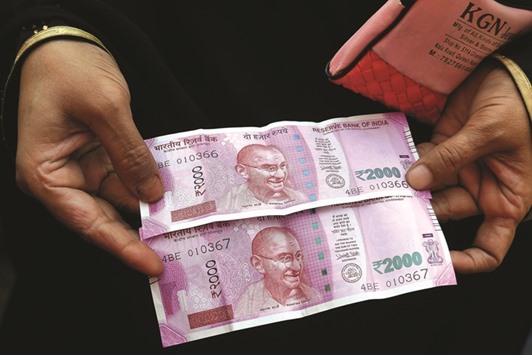Here’s a silver lining for India’s bond bulls stung by losses after the central bank’s surprise decision not to cut benchmark interest rates - better rupee outlook.
Analysts say the Reserve Bank of India panel’s move to hold rates, which caused the benchmark 10-year yield to jump the most since 2013, could revive overseas demand for rupee debt as its yield advantage over Treasuries improves. Local sovereign notes due in a decade pay 400 basis points more than similar-maturity US bonds, with a rate increase by the Federal Reserve this week fully priced in. The gap hit a seven-year low of 377 last week.
Yields in India plunged to the lowest since April 2009 in the run-up to the rate decision as a banking system awash with cash boosted local appetite for debt. Foreigners have been selling into the rally. Overseas holdings of rupee-denominated government and corporate notes have dropped by Rs376bn ($5.6bn) since September 30, the biggest quarterly slide in National Securities Depository data compiled by Bloomberg going back to 2011.
The decision to hold rates “would maintain India’s yield advantage,” said Gao Qi, a Singapore-based foreign-exchange strategist at Scotiabank. “In the medium term, it enhances investors’ confidence and is rupee supportive. Maintaining financial stability is the central bank’s top priority in an environment where emerging markets are bracing for heightened volatility due to higher Fed rates.”
The 10-year yield climbed four basis points to 6.44% in Mumbai on Friday, taking its advance for the week to 20 basis points, the biggest since April 2014. The rupee weakened 0.1% to 67.4175 per dollar, paring its gain this week to 1.2%. That was still the biggest since the five days ended March 4.
Borrowing in dollars to purchase rupee assets has earned 2.8% since the end of June, the best carry-trade return in Asia, data compiled by Bloomberg show. While foreign outflows from Indian stocks and bonds this quarter saw the rupee sink to an unprecedented 68.8650 per dollar in the spot market last month, the currency is forecast to deliver a total return of 5.7% by the end of 2017, the highest in the region.
“Any dovish move” by India’s rate-setting panel “in the context of already sharp narrowing of interest-rate differentials could have signalled that the RBI assesses the rupee to be overvalued, and wants to discreetly engineer stronger depreciation,” Prasanna Ananthasubramanian, Mumbai- based chief economist at ICICI Securities Primary Dealership, wrote in a report. “It is important not to undermine currency stability in the current global backdrop and context of portfolio outflows from EMs including India.”

A customer holds new rupee banknotes for a photograph outside an India Post branch in New Delhi. Analysts say the Reserve Bank of India panel’s move to hold rates, which caused the benchmark 10-year yield to jump the most since 2013, could revive overseas demand for rupee debt as its yield advantage over Treasuries improves.


